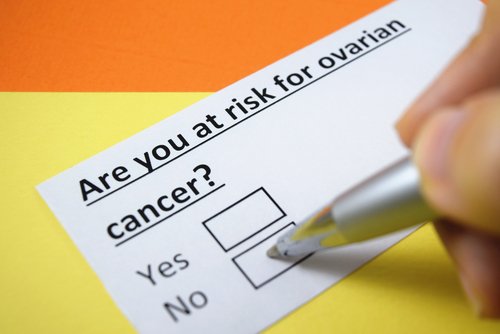Ovarian cancer screening in women of average age who have no symptoms offers no benefits and can cause harm, according to a draft of new screening guidelines.
This means screening is not recommended for them, according to the draft from the U.S. Preventative Services Task Force. The task force is an independent group of experts who make recommendations about healthcare preventive services, including screenings, preventive medications, and counseling services.
The draft recommendations, available here, are open for public comment until Aug. 14.
Ovarian cancer is the fifth most common cause of cancer deaths in women. Most occur in women over the age of 45.
The draft recommendations are only for women with no symptoms. They also do not apply to women with gene mutations that increase the risk of developing ovarian cancer: BRCA1 and BRCA2.
Doctors screen for ovarian cancer in two ways. One is with transvaginal ultrasound. The other is testing blood for the CA-125 cancer antigen.
Both tools are poor predictors of the cancer, however. In addition, many women who test positive do not go on to develop ovarian cancer.
The preventive services task force based its screening recommendations on a review of ovarian cancer research. Many of the studies covered clinical trials that evaluated screening approaches. Some focused on women of average age with no symptoms.
Screening did not significantly reduce ovarian cancer deaths in any of the studies.
The largest and most recent trial, UKCTOCS (NCT00058032), covered more than 200,000 postmenopausal women from the ages of 50 to 74. Women were randomized to receive either a transvaginal ultrasound, a blood test for levels of CA-125, or no screening.
Ovarian cancer deaths were similar in the three groups after a median follow-up of 11.1 years.
The PLCO trial (NCT01696994) compared deaths among women who had transvaginal ultrasound or CA-125 testing with women who had no screening. There was no difference in deaths between the screening and non-screening groups after 12.4 years.
In addition to offering no benefits, screening may also cause harm, the task force said.
When a test indicates a woman has cancer, and she actually doesn’t have it, she may opt for ovarian surgery that is unnecessary.
Across the studies that the task force reviewed, the false positive rate ranged from 4.2 percent of patients who were screened to 44.2 percent, depending on the screening approach used.
The analysis of the studies prompted the task force to write that “there is consensus among major medical and public health organizations that screening for ovarian cancer in the general population is not recommended.”
For women at high risk of developing the disease, such as those with BRCA1 or BRCA2 mutations, the task force said doctors should consider a combination “of a thorough pelvic examination, transvaginal ultrasound, and the CA-125 blood test.”

